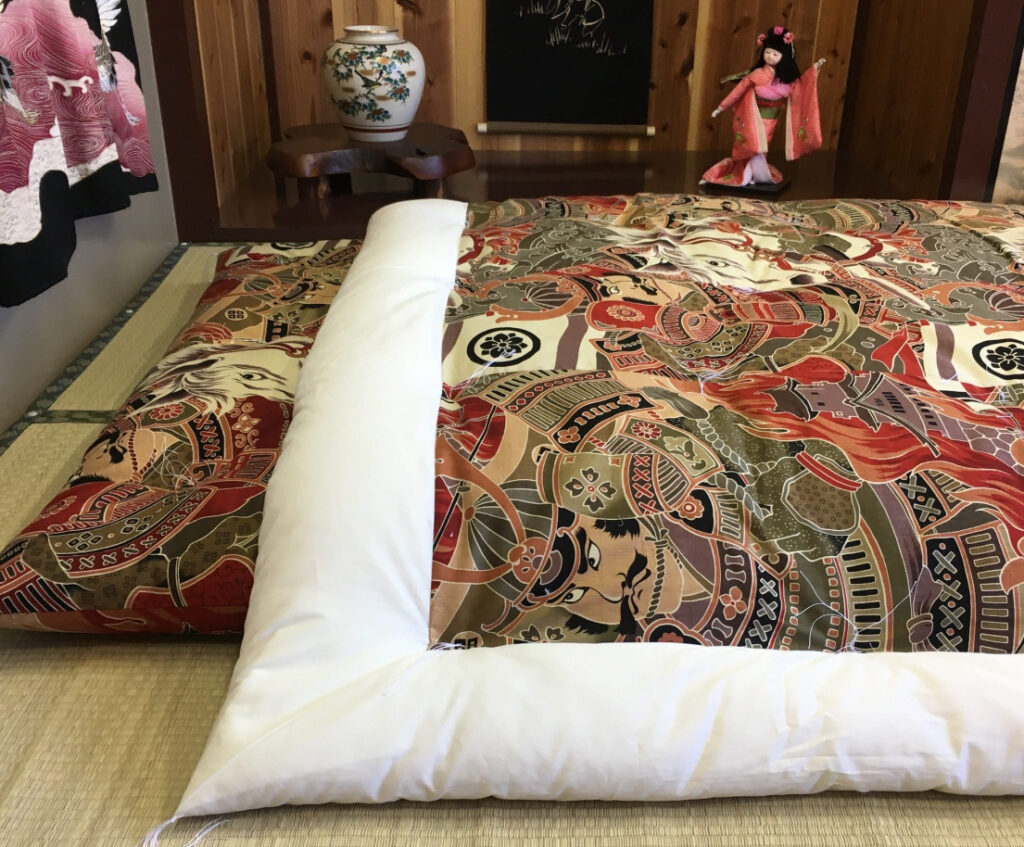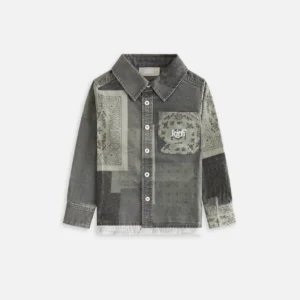In a world increasingly focused on wellness and mindfulness, sleep is emerging as a cornerstone of a healthy lifestyle. The Japanese futon, a minimalist yet profoundly comfortable bedding solution, embodies centuries of tradition, craftsmanship, and cultural philosophy. More than just a place to sleep, the futon represents a way of life—one that embraces simplicity, sustainability, and hospitality. Whether you’re seeking better sleep quality, a more flexible living space, or a deeper connection to Japanese culture, the futon offers an inviting solution.
This article explores the craftsmanship behind Japanese futons, their environmental benefits, and how they reflect the values of Japanese hospitality, known as omotenashi. By embracing the futon, you are not just investing in a bedding solution but adopting a centuries-old tradition that promises a lifetime of cosy dreams.
The History and Evolution of the Japanese Futon
The futon has been an essential part of Japanese culture for over a thousand years, tracing its origins back to the Heian period (794–1185). Initially, people slept on woven mats made of straw or thin layers of fabric, gradually evolving into the cotton-filled futons we recognize today. By the Edo period (1603–1868), futons became more widely accessible, thanks to advancements in cotton production and weaving techniques.
Unlike Western beds with rigid frames and thick mattresses, the Japanese futon is designed to be flexible, lightweight, and easily storable. Traditionally laid out on tatami mats, futons provide a firm yet comfortable sleeping surface that promotes spinal alignment and overall well-being.
Over the years, futons have evolved to incorporate modern materials while maintaining their core principles of comfort and functionality. Today, high-quality futons are still handcrafted using traditional methods, ensuring that each piece carries the essence of Japanese artistry.
The Craftsmanship Behind Japanese Futons
One of the most appealing aspects of Japanese futons is the craftsmanship that goes into their production. Each futon is carefully handcrafted by skilled artisans who take great pride in their work. The process typically involves several stages:
Material Selection: High-quality natural materials, such as cotton or wool, are carefully chosen to provide the right balance of softness and support. Cotton futons, in particular, are known for their breathability and ability to regulate temperature, making them suitable for all seasons.
Layering: The filling is layered in a precise manner to ensure even distribution and optimal comfort. Traditional techniques passed down through generations help achieve the perfect balance of firmness and fluffiness.
Quilting: Expert quilting ensures that the futon maintains its shape and durability over time. Each stitch is meticulously placed to prevent shifting of the filling while adding to the futon’s aesthetic appeal.
Final Inspection: Before being delivered to customers, each futon undergoes a rigorous quality check to ensure it meets the high standards expected of traditional Japanese bedding.
The dedication and precision involved in futon-making reflect Japan’s commitment to excellence and attention to detail, ensuring that each piece is a work of art.
Sustainability and Environmental Benefits
In today’s eco-conscious world, the Japanese futon stands out as a sustainable alternative to conventional beds. Made from natural, biodegradable materials, futons have a significantly lower environmental impact compared to modern synthetic mattresses.
Key Sustainability Benefits:
•Minimal Use of Resources: Futons require fewer materials and energy to produce than bulky Western-style beds, making them an eco-friendly choice.
•Longevity: With proper care, a well-crafted futon can last for decades, reducing waste and the need for frequent replacements.
•Biodegradability: Unlike foam and synthetic mattresses that contribute to landfill waste, cotton and wool futons naturally decompose over time.
•Multi-Functional Use: Since futons can be rolled up and stored away when not in use, they allow for more efficient use of living space, reducing the need for excess furniture.
By choosing a futon, individuals can embrace a more sustainable lifestyle while enjoying the comfort and versatility that this traditional bedding offers.
The Futon and Japanese Hospitality (Omotenashi)
At the heart of Japanese culture lies the concept of omotenashi, a deep-rooted sense of hospitality that emphasizes attention to detail and guest comfort. The futon embodies this spirit, offering a welcoming and restful sleep experience for both residents and guests.
In traditional Japanese inns (ryokan), futons are meticulously prepared each evening and folded away in the morning to create an open, versatile space. This practice showcases the careful thought put into making guests feel at ease, ensuring they have a peaceful and restorative sleep.
When you sleep on a futon, you are not just experiencing a bedding solution but also a reflection of Japan’s cultural values—thoughtfulness, simplicity, and a harmonious connection to one’s surroundings.
Health Benefits of Sleeping on a Futon
Beyond cultural and environmental advantages, Japanese futons provide several health benefits that can enhance your overall well-being:
•Spinal Alignment: A futon’s firm yet yielding support encourages proper posture, reducing back pain and muscle tension.
•Improved Air Circulation: Cotton futons allow for better airflow compared to foam mattresses, preventing heat buildup and promoting a cooler sleep environment.
•Hygienic Choice: Unlike traditional mattresses that can trap dust mites and allergens, futons are easy to air out and clean, making them an excellent choice for allergy sufferers.
•Adaptability: The ability to adjust the firmness by adding or removing layers allows for customization based on individual preferences.
By opting for a futon, individuals can enjoy a sleep surface that supports their body’s natural alignment and contributes to long-term health benefits.
Incorporating a Futon into a Modern Lifestyle
Many people associate futons with traditional Japanese homes, but they can seamlessly fit into modern lifestyles and living spaces. Whether you live in a compact city apartment or a spacious house, futons offer unmatched flexibility and functionality.
Tips for Integrating a Futon:
Choose the Right Size: Futons come in various sizes, from single to king, allowing you to find the perfect fit for your space and needs.
Pair with Tatami Mats: Placing your futon on tatami mats enhances its comfort and provides a touch of traditional Japanese aesthetics.
Use Stylish Covers: Futon covers come in a wide range of colors and designs, enabling you to personalize your sleep space to match your interior decor.
Adopt a Minimalist Mindset: A futon encourages decluttering by freeing up space during the day, promoting a more organized and serene environment.
The versatility of futons makes them an excellent choice for anyone looking to embrace a more adaptable and minimalist approach to their living space.
Caring for Your Futon
Proper care is essential to maintain the comfort and longevity of a futon. Here are some essential maintenance tips:
•Regular Airing: To prevent moisture buildup and maintain freshness, futons should be aired out in the sun regularly.
•Fluffing: Gently beating and fluffing the futon helps redistribute the filling and keeps it comfortable.
•Storage: When not in use, futons should be stored in a dry, well-ventilated area to prevent mold and odors.
•Washing Covers: Removable futon covers should be washed periodically to maintain hygiene and aesthetics.
With these simple steps, your futon can provide years of comfortable sleep and remain in excellent condition.
Impression
The Japanese futon is more than just a sleeping surface—it is a testament to Japan’s rich heritage, dedication to craftsmanship, and sustainable approach to living. By choosing a futon, you are embracing a tradition that values comfort, adaptability, and mindfulness in everyday life.
Whether you are drawn to its environmental benefits, the cultural experience it offers, or the health advantages it provides, the futon promises a lifetime of cosy dreams. As you lay down each night, enveloped in the soft embrace of meticulously crafted bedding, you become part of a centuries-old tradition that continues to inspire restful sleep and harmonious living.
Consider making the switch to a Japanese futon and discover the art of rest—crafted with care, rooted in tradition, and designed for a better night’s sleep.
No comments yet.







